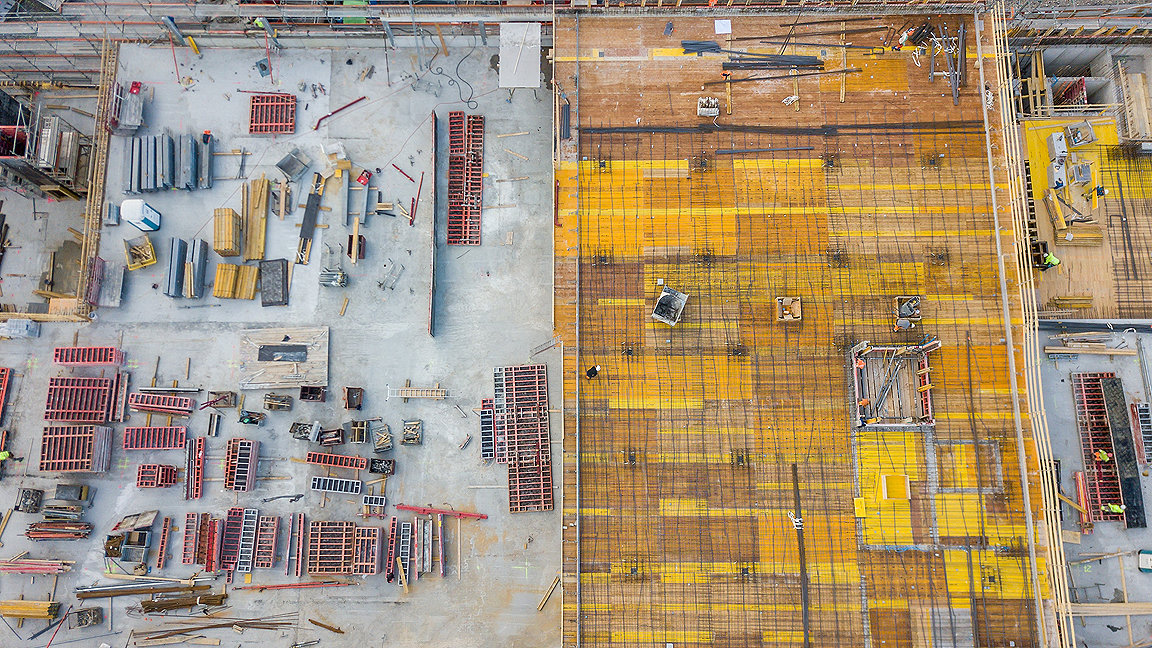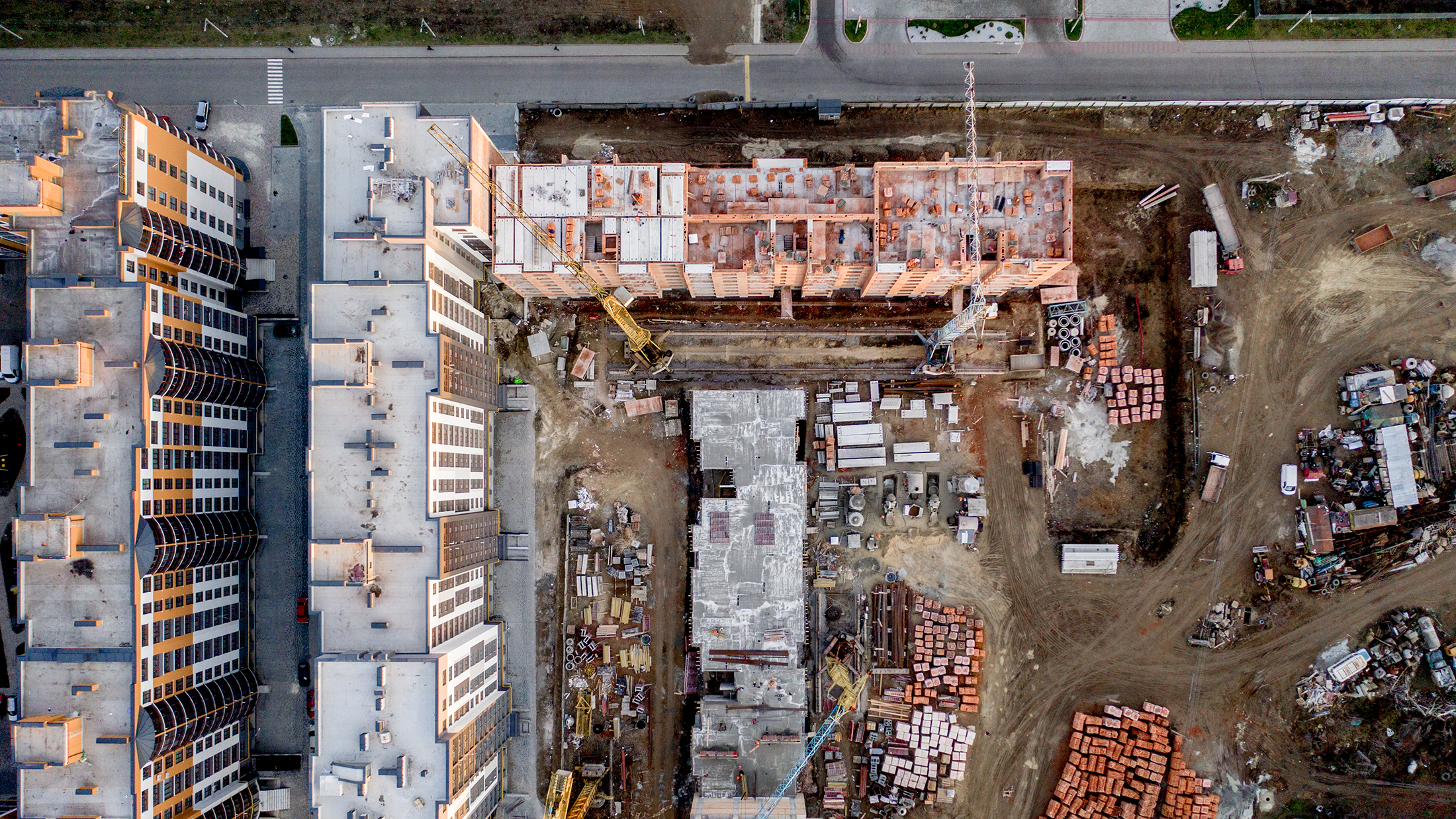
Unusually high levels of inflation have made the construction industry feel very different over the past year.
The relatively predictable environment of low inflation before the pandemic has given way to a 10.1% rise in the Consumer Prices Index (CPI) in the 12 months to January. This is itself down from a peak of 11.1% in the 12 months to October 2022 – the highest annual UK inflation rate in more than 30 years.
The Office for Budget Responsibility forecasts that inflation will fall as quickly as it peaked, with negative rates expected by the end of 2024. However, the recent surprise rise in inflation means volatility is probably here to stay.
While the current situation is challenging for all businesses, it is particularly bad for the construction industry. In 2022, the UK economy saw the highest level of insolvencies since the 2008 global financial crisis, and almost one in five of these occurred in the construction industry.
Unfortunately, in addition to managing risk on our own projects, this means we must be on the lookout for signs of financial stress in the supply chain. The volatility of recent months has shown the need to increase supply chain due diligence before awarding contracts, as well as intensify monitoring on site for signs of emerging problems.
Inflation rates – one crisis among many
Inflation is a financial expression of multiple crises playing out simultaneously. The world has emerged from the shock of a global pandemic into an energy crisis triggered by the war in Ukraine. This is happening in the wider context of the climate emergency – and we cannot overlook the UK's departure from the EU, or the impacts this has had on labour availability in construction.
A key lesson from the past year and the pandemic that preceded it, therefore, is that our external delivery environment has never been more unpredictable, and the scope of unknown unknowns is likely larger than it once was.
As a result, the industry has seen a recent rise in the project ante-mortem. This provides scenario planning for clients, allowing them to stress test possible responses should there be major changes in the project's context.
While this is useful, we must accept there are some events we just won't foresee, such as the pandemic. As a result, we need to be confident that our projects are resilient, meaning they have the ability to minimise the impact of disruption from events in a volatile wider context.
Good governance, processes and procedures will provide the framework to deal with issues as they do arise, and good assurance will validate this.
Indices must account for industry-specific inflation
CPI is a useful headline statistic representing general rates of inflation, but the basket of goods used to calculate it isn't specific to construction. The price of mouthwash, muffins and manicures all contribute to the index, though they bear little relation to the materials used in major projects.
Many construction materials have seen significant price swings in the recent past. Ready-mixed concrete increased in cost by 19% and concrete reinforcing bars by 39% between 2021 and 2022 and these are not part of the basket of goods used to calculate CPI.
If we are to quantify inflation exposure on our projects accurately, we must therefore select an index that reflects the work it's applied to. National Highways for instance has developed its own bespoke index relating to construction costs, while the Building Cost Information Service publishes specific indices that can be applied to components such as site labour by trade, plant and input materials.
The past year has shown that using a range of indices, applied to the relevant components, can offer a more accurate quantification of inflation exposure.
Calculation should not confuse detail with accuracy
But it is easy to confuse a detailed inflation calculation with an accurate one. At the cost planning stage, we should divide our estimate into work package values, and then further divide it into specific costs for labour, plant and types of materials. We can then apply a specific index to each cost type and generate a considered quantification of inflation exposure.
However, the degree of assumption involved in this will be significant, and the contractor may ultimately change construction methodology or sequencing when the project gets on site. This means the inflation calculation may turn out not to be so accurate.
In reviewing National Highways' bespoke index, for instance, the Office for Road and Rail reflected that 'there is a balance to be struck between striving for "perfection" (and the complexity it brings) and taking a simpler approach'. This is a good point for all practitioners to reflect on.
Pragmatism advised on contract mechanisms
The NEC is the recommended form of contract for public-sector procurement, so it is used widely across the UK's most prestigious infrastructure developments. Like most forms of main contract, it contains an option clause for adjusting the contract prices for inflation; in NEC this is known as X1.
In using this clause, as with other main forms of contract, we are able to design the adjustment mechanism ourselves.
It is possible to break the contract sum down in great detail and apply separate indices to individual aspects. However, we must balance this with the requirement to assess the interim payment inside the contractual timescales, and for the main contractor to align the main contract approach with its own supply chain. The past year has shown the need to be realistic in how we intend to apply the inflation mechanisms once the project is on site.
The NEC was first used in 1993, since when the relative stability of inflation rates – CPI didn't exceed 5.2% until December 2021 – means the provisions for making inflationary adjustments were not tested in a volatile environment for almost three decades. In practice, this has resulted in a flurry of drafting new X1 mechanisms over the last year, to reflect the increased risk.
Balancing risk allocation
Good project management says that risks are best held by the party most able to manage them. However, inflation has presented a sizeable risk in an already volatile market, which neither employer nor contractor is able to manage effectively. Risk must therefore be allocated fairly between employer and contractor, reflecting the individual project's context.
Employers must be cautious about pressing for the contractor to take inflation risk as part of a fixed price if there is no management action the contractor can take. This can lead to oversized risk allowances, or potentially put the contractor at financial risk. Employers can hold additional risk allowances at portfolio or programme level to manage this.
If the nature of the project means the contractor can procure and stockpile all materials, it may be better placed to hold the inflation risk. Although the external environment is volatile, it is useful to reflect on how each specific project may be affected before deciding how to allocate the inflation risk.
'Risk must be allocated fairly between employer and contractor, reflecting the individual project's context'
Let's take the opportunities crisis presents
Although we are experiencing significant market volatility, this can be a catalyst for change and innovation in the industry.
For instance, the government is leveraging its position as the UK's single largest construction client to increase the use by its supply chain of design for manufacture and assembly.
Its use of modern methods of construction in this way has the potential to insulate major government programmes against inflationary peaks, and build predictable, published commercial pipelines to give confidence to the supply chain. This can be achieved by significantly reducing construction time, labour requirements and material waste, and is endorsed by Tier 1 contractors such as Kier.
This offers the biggest lesson of all from the previous year: as an industry, we must move away from reacting to inflation and be proactive about avoiding its impact.

